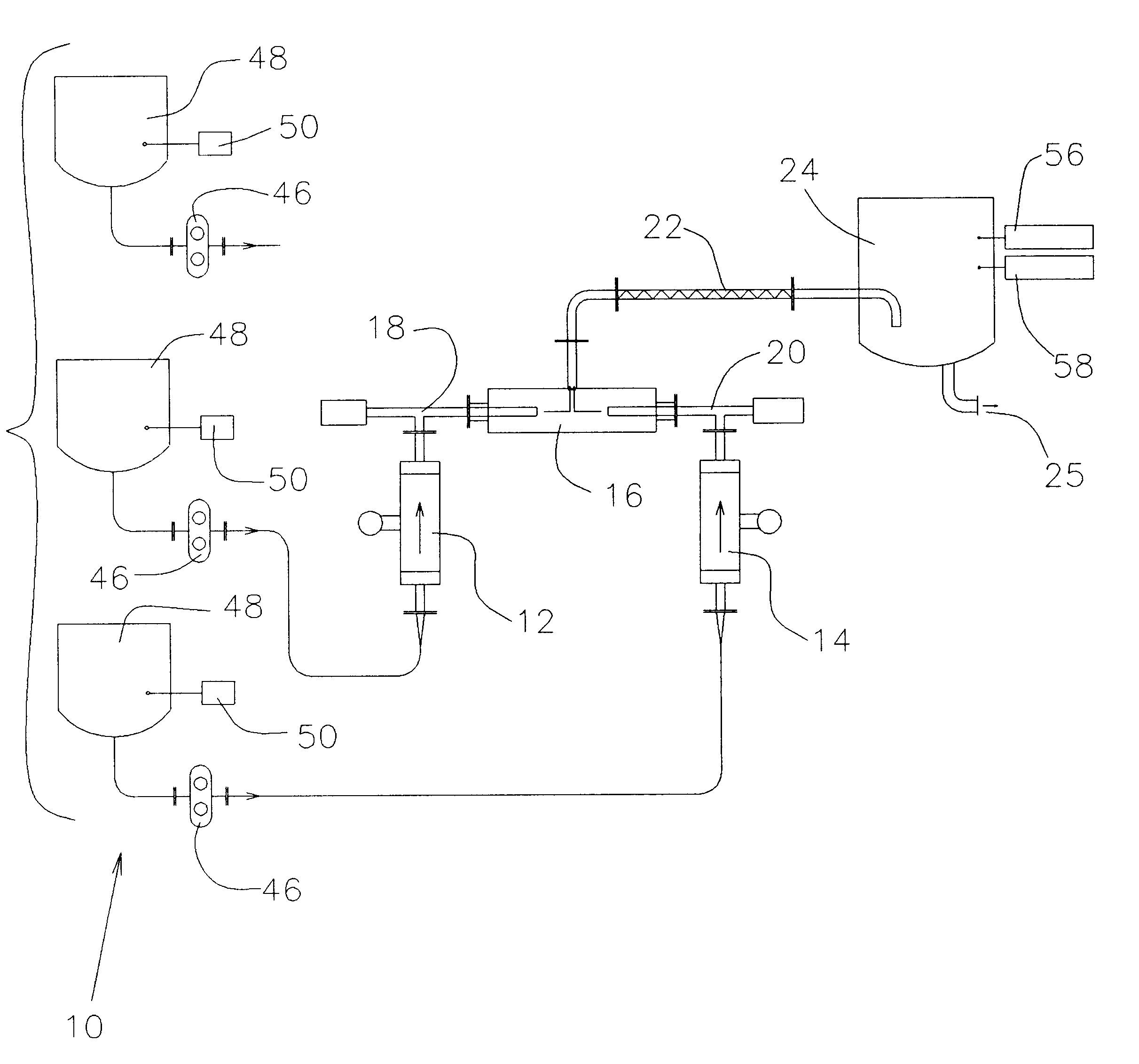Continuous liquid stream digital blending system
a digital blending and liquid stream technology, applied in liquid handling, instruments, packaged goods types, etc., can solve the problems of large manufacturing space, frequent change of rheological or chemical properties of batch, and many drawbacks of liquid batching, so as to reduce the volume of clean-in-place effluent, reduce loss, and reduce the effect of cip
- Summary
- Abstract
- Description
- Claims
- Application Information
AI Technical Summary
Benefits of technology
Problems solved by technology
Method used
Image
Examples
Embodiment Construction
Configure a system to provide a continuous flow of liquid product to a filling line at the maximum rate of 100 GPM.
Note that the math procedures described below are actually performed in the batch computer 54, typically a high end PLC, with a color graphic active matrix LCD PC based operator interface 62.
The product formula expressed in volume ratio and units of flow per minute is:
Step 1
Convert the volumetric formula to a mass formula.
To convert the volumetric formula to mass ratio, each formula component gallon per minute volumetric ratio is multiplied by 8.3453 to convert to a water weight equivalent (in this instance in pounds). This figure is then multiplied by the specific gravity of each formula component to obtain a pounds per minute of flow number for each constituent liquid. The pounds per minute result is rounded to two decimals in this text for convenience. Thus:
Note that each flow rate of each formula component is now expressed in mass units per minute.
Step 2
Restate the ...
PUM
| Property | Measurement | Unit |
|---|---|---|
| duration time | aaaaa | aaaaa |
| cycle time | aaaaa | aaaaa |
| mass ratio | aaaaa | aaaaa |
Abstract
Description
Claims
Application Information
 Login to View More
Login to View More - R&D
- Intellectual Property
- Life Sciences
- Materials
- Tech Scout
- Unparalleled Data Quality
- Higher Quality Content
- 60% Fewer Hallucinations
Browse by: Latest US Patents, China's latest patents, Technical Efficacy Thesaurus, Application Domain, Technology Topic, Popular Technical Reports.
© 2025 PatSnap. All rights reserved.Legal|Privacy policy|Modern Slavery Act Transparency Statement|Sitemap|About US| Contact US: help@patsnap.com



